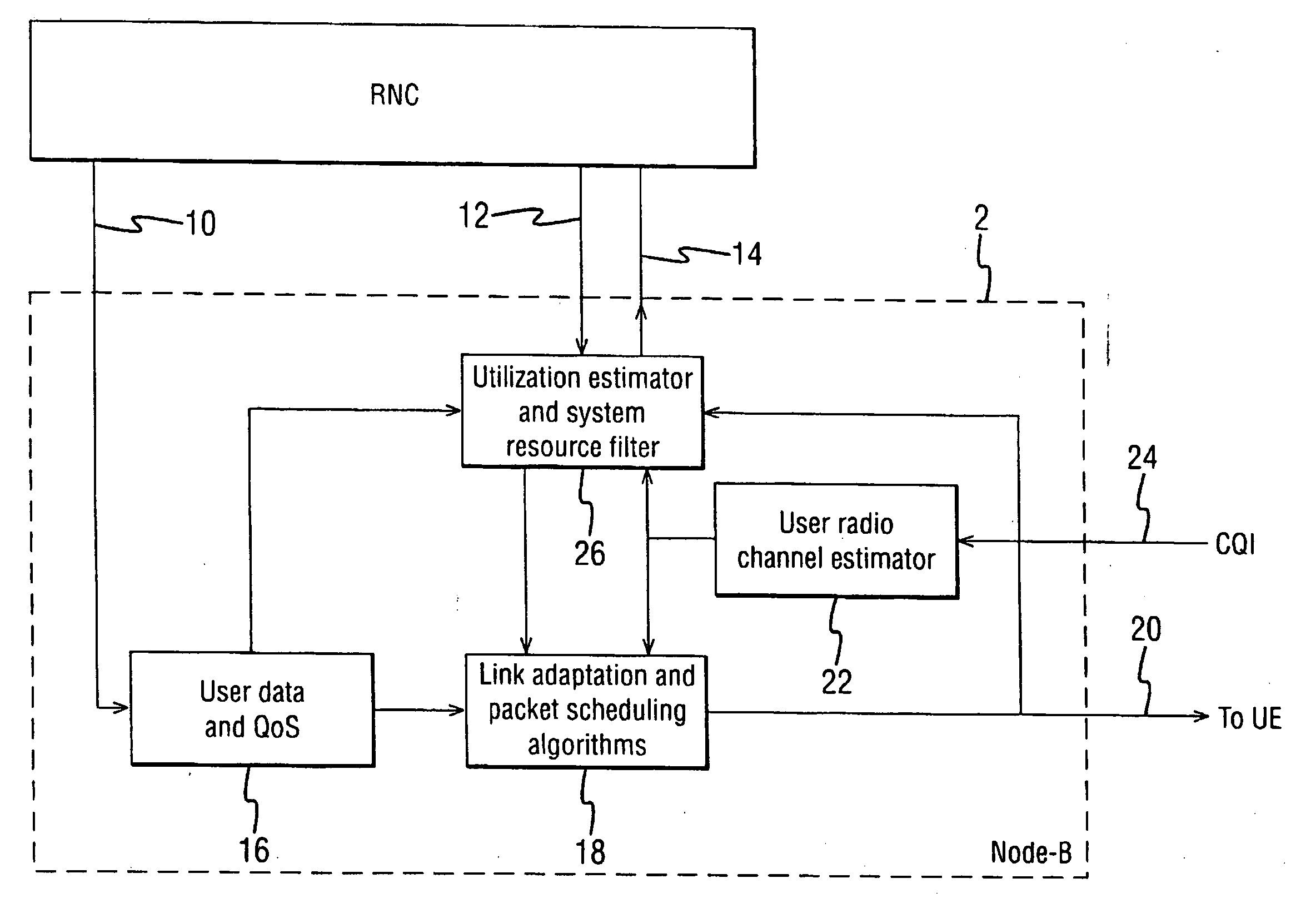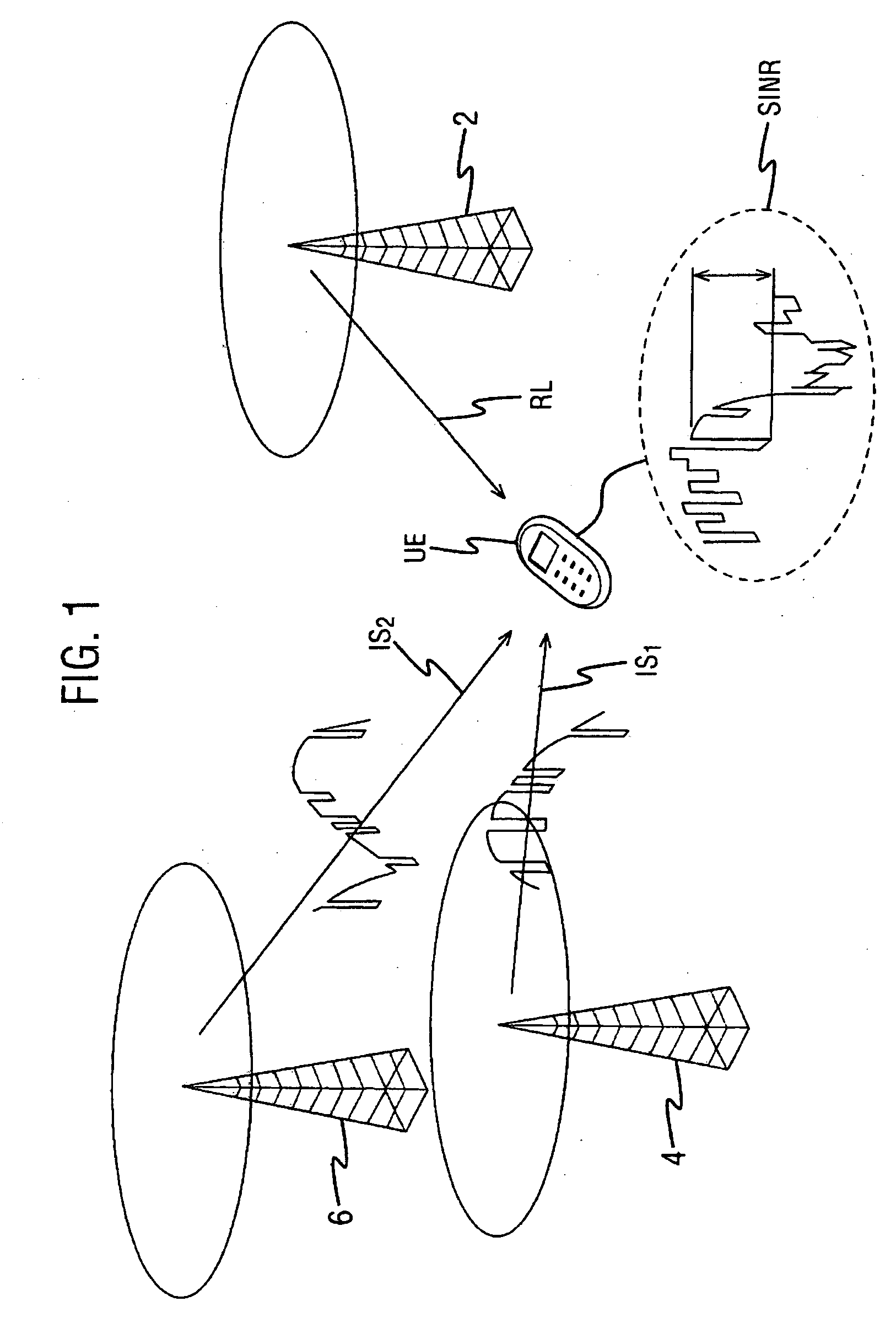Transmitting data in a wireless network
- Summary
- Abstract
- Description
- Claims
- Application Information
AI Technical Summary
Benefits of technology
Problems solved by technology
Method used
Image
Examples
Embodiment Construction
[0034]FIG. 2 illustrates the context of the following described embodiment of the invention. A base station BTS transmits packet based services to a plurality of users in its cell. Two users are shown, denoted UE1, UE2. Each user receives signalling and data along a respective downlink DL1, DL2, and returns channel quality feedback (for example Channel Quality Indicator (CQI), Ack / Nack, Transmission Power Control (TPC)) over a corresponding uplink channel, UL1, UL2 respectively. The base station incorporates a Node-B which communicates with the radio network controller RNC over the IUB interface. In general, transmissions are arranged in a way that two users scheduled within the same cell (same Node-B) will not interfere with each other provided that there is no multipath effects in the cell. The system described herein addresses interference which can arise when another user is scheduled by another Node-B.|
[0035]FIG. 2A shows one example of a very simple packet scheduler implementa...
PUM
 Login to View More
Login to View More Abstract
Description
Claims
Application Information
 Login to View More
Login to View More - R&D
- Intellectual Property
- Life Sciences
- Materials
- Tech Scout
- Unparalleled Data Quality
- Higher Quality Content
- 60% Fewer Hallucinations
Browse by: Latest US Patents, China's latest patents, Technical Efficacy Thesaurus, Application Domain, Technology Topic, Popular Technical Reports.
© 2025 PatSnap. All rights reserved.Legal|Privacy policy|Modern Slavery Act Transparency Statement|Sitemap|About US| Contact US: help@patsnap.com



